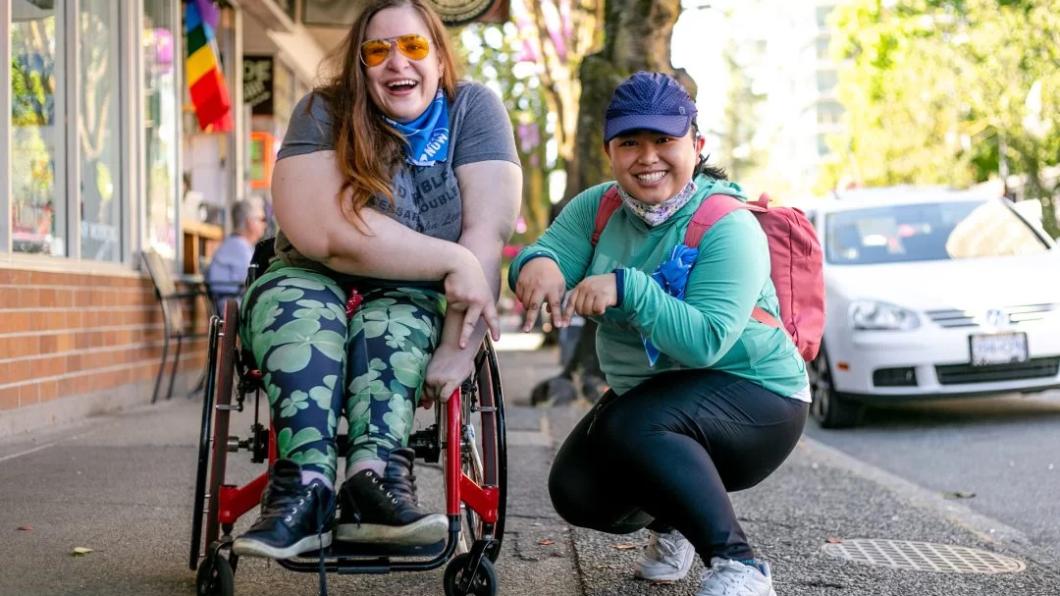
Major Canadian cities shut out disabled people, study finds
Jenna Reed-Cote and Katrina Darielle Valdez mapped the accessibility of Vancouver for people with disabilities as part of a research project. Photo by Alexa Fernando
By Louise Kinross
Nearly 60 per cent of public buildings and spaces in Vancouver, Calgary and Ottawa are not accessible to people with disabilities, or only partially accessible, according to a study called Mapping Our Cities for All (MOCA) by AccessNow.
AccessNow is a crowdsourcing app that allows users to rate the accessibility of restaurants, hotels, storefronts, parks, community centres and other public spaces. It was designed by Maayan Ziv, a Toronto entrepreneur and disability activist who uses a wheelchair.
Her group trained over 40 mappers, including youth with disabilities, to assess over 14,000 locations on a wide variety of accessibility features. Everything from whether a spot has automatic doors and flush toilets to whether it's well lit for visibility, there are lower counters and Braille signage. In addition to the three cities, 17 small rural towns in Alberta were assessed.
“One of the most common tags we observed was for accessible parking, whereas sign language was the least,” says Mayaan Ziv, founder and CEO of AccessNow. “This is concerning for the over 350,000 deaf and over three million hard-of-hearing people in Canada.”
Calgary fared the worst on inclusion, with only 35% of public buildings accessible. “Calgary is home to many heritage buildings which need remediation,” Mayaan says. “Accessibility standards are incomplete and don’t reflect elements like customer service or digital access within the built environment.” A partially accessible business may have an accessible entrance, but not an accessible bathroom.
In Vancouver, 49 per cent of public buildings were rated accessible. In Ottawa it was 53 per cent.
In terms of sectors, education services, which includes schools and universities, was the least inclusive, with less than 35 per cent of locations rated accessible.
Sectors with at least half of businesses rated accessible were health and personal care, real estate, finance and insurance, clothing and accessories, and sporting good stores.
Urban areas had 44 per cent of businesses within the accessible category, compared to 39 per cent in rural areas.
Inaccessibility can make getting around dangerous for people with disabilities. It can also result in inequitable healthcare and housing, and make necessities like going to the grocery store, difficult.
“As far as we are aware, no similar accessibility research effort of this scale has ever been completed,” Mayaan says. “This type of research can easily be replicated in cities and communities across Canada using the AccessNow app.” MOCA hopes to map Toronto, Montreal, Halifax and Winnipeg next.
The study was a collaboration with the University of Calgary and Spinal Cord Injury Canada, and was funded by Accessibility Standards Canada and the Social Sciences and Humanities Research Council.
“Accessibility is a fundamental human right,” Mayaan says. “At AccessNow, we envision a world where everyone can navigate their surroundings with ease and dignity, regardless of their abilities.”
Like this story? Sign up for our monthly BLOOM e-letter. You'll get family stories and expert advice on raising children with disabilities; interviews with activists, clinicians and researchers; and disability news.